




When it comes to laundry, many of us have been guilty of throwing all our clothes together without considering any potential consequences. One common mistake is washing white clothes with dark clothes. While it might seem convenient to throw everything into the washing machine at once, this practice can have negative effects on your wardrobe.
The first and most obvious effect of washing white clothes with dark clothes is color bleeding. Dark-colored fabrics, such as jeans or black shirts, can release dye during the washing process, which can be absorbed by lighter-colored items. This can result in the white clothes turning dull or acquiring a grayish tint. Additionally, dark clothes can transfer lint to white clothes, making them appear dirty or worn-out. The color bleeding and lint transfer can significantly impact the overall look and quality of your white garments.
Another consequence of washing white clothes with dark clothes is fabric damage. Dark clothes are often made of heavier fabrics like denim or corduroy, which can be abrasive. When washed together, these fabrics can rub against delicate white garments, causing abrasion, pilling, or stretching. As a result, white clothes may lose their original shape, become damaged, or wear out faster.
Lastly, washing white clothes with dark clothes can lead to staining. Dark clothes may contain oils, lotions, or other substances that can transfer to white clothes during the wash cycle. These stains may be difficult or even impossible to remove, leaving your white clothes permanently marked.
In conclusion, it is best to separate white clothes from dark clothes when doing laundry. By doing so, you can preserve the brightness and quality of your white garments, avoid color bleeding and staining, and extend the lifespan of your clothing. Taking a little extra time to separate your laundry can go a long way in maintaining a clean and polished wardrobe.
Why Washing White Clothes with Dark Clothes is a Bad Idea
Washing white clothes with dark clothes may seem like a convenient way to save time and effort, but it can have negative effects on your white garments. Here are some reasons why washing white clothes with dark clothes is a bad idea:
- Color bleeding: Dark clothes have a tendency to bleed color when washed, especially during the first few washes. When washed together, the dark dye can transfer onto the white clothes, resulting in stains or discoloration. This can ruin the pristine look of your white garments.
- Deterioration of fabric: Dark clothes often contain fabric dyes that can be harsh on delicate white fabrics. The chemicals in these dyes can weaken the fibers of white clothes over time, leading to faster wear and tear. Washing white clothes separately helps maintain their quality and prolong their lifespan.
- Possible damage to prints or embellishments: White clothes with prints or embellishments can get damaged when washed with dark clothes. The friction between different materials during washing can cause prints to fade or peel off, and delicate embellishments may become loose or fall off entirely.
- Different washing requirements: White clothes and dark clothes often have different washing needs. Whites may require bleach or stain removers to remove stubborn stains, while dark clothes may need gentle washing to prevent color fading. Washing them together can compromise the effectiveness of either treatment, resulting in poor stain removal or color retention.
To keep your white clothes looking their best, it’s best to separate them from dark clothes when doing laundry. This will help maintain their color, fabric quality, and overall appearance. Consider using separate loads for white and dark clothes to ensure optimal care for both.
The Problem with Mixing Colours

Mixing white clothes with dark clothes in the washing machine can often lead to unwanted consequences. While it may seem convenient to wash all your laundry together, it can result in discoloration and staining, affecting the overall appearance of your clothes.
Discoloration:
- White clothes may turn gray or yellowish when washed with dark-colored garments.
- Colors from dark clothes can bleed or transfer onto lighter fabrics, altering their original hue.
Staining:
- Dark clothes, particularly those that are new or highly pigmented, may release dyes that can stain light-colored fabrics.
- Oils and dirt trapped in dark clothes can transfer onto whites, leaving visible stains.
Damage:
- Aggressive washing cycles or high temperatures required for darker items can cause wear and tear on delicate white fabrics.
- The friction between different fabrics during the wash cycle can result in pilling or fraying.
Tips to Avoid Color Mishaps:
- Separate your colored clothes from white garments before washing.
- Sort clothes based on color intensity, grouping together darks, lights, and whites.
- Pre-treat stains, especially on white clothes, before washing.
- Use a gentle or color-safe detergent specifically formulated for mixed loads.
- Wash white clothes at a lower temperature and with a shorter cycle to minimize damage.
| Stain Type | Technique |
|---|---|
| Color bleeding or transfer stains | Soak in a solution of oxygen-based bleach and warm water before washing. |
| Oil or grease stains | Apply a pre-treatment stain remover directly on the affected area, then wash as usual. |
| Tannin stains (coffee, tea, wine) | Soak in a mixture of cool water and a mild detergent, then wash with an enzyme-based detergent. |
| Protein-based stains (blood, sweat) | Soak in cold water, then wash using an enzyme-based detergent. |
Stains and Colour Transfer

One of the main concerns when washing white clothes with dark clothes is the potential for stains and colour transfer. This happens when the dark dyes from the dark clothes bleed onto the white clothes, resulting in stains and discolouration.
Causes of Stains and Colour Transfer
- Incorrect sorting: Sorting clothes properly before washing is crucial to prevent colour transfer. Whites and lights should be separated from darks to minimize the chances of colour bleeding onto white clothes.
- Overloading the washing machine: Overloading the washing machine can prevent proper water circulation and increase the likelihood of colour transfer. It is important to leave enough space for water and detergent to reach every garment and to allow for proper movement during the wash cycle.
- Using excessive detergent: Using too much detergent can create a build-up that can trap dyes within the fabric, increasing the risk of colour transfer. It is best to follow the recommended dosage on the detergent packaging.
- High water temperature: Washing clothes at high temperatures can cause dyes to bleed more easily, especially if the clothes are not colorfast. It is advisable to wash dark clothes in cold water or according to the care label instructions.
Preventing Stains and Colour Transfer
To prevent stains and colour transfer when washing white clothes with dark clothes, consider following these tips:
- Sort clothes properly: Separate white clothes, lights, and darks before washing and ensure that the dark clothes are colorfast.
- Use color-catching sheets: Color-catching sheets can help absorb any dye that is released during the wash, preventing it from transferring onto other clothes.
- Wash dark clothes separately: When possible, wash dark clothes separately to minimize the risk of colour bleeding.
- Choose appropriate detergents: Use detergents that are specifically designed for colored and dark clothes. These detergents usually contain ingredients that help prevent colour transfer.
- Follow care label instructions: Always check the care label instructions on each garment for recommended washing temperatures, washing cycles, and any special care instructions.
By taking the necessary precautions and following these guidelines, you can minimize the risk of stains and colour transfer when washing white clothes with dark clothes.
Damage to White Fabric
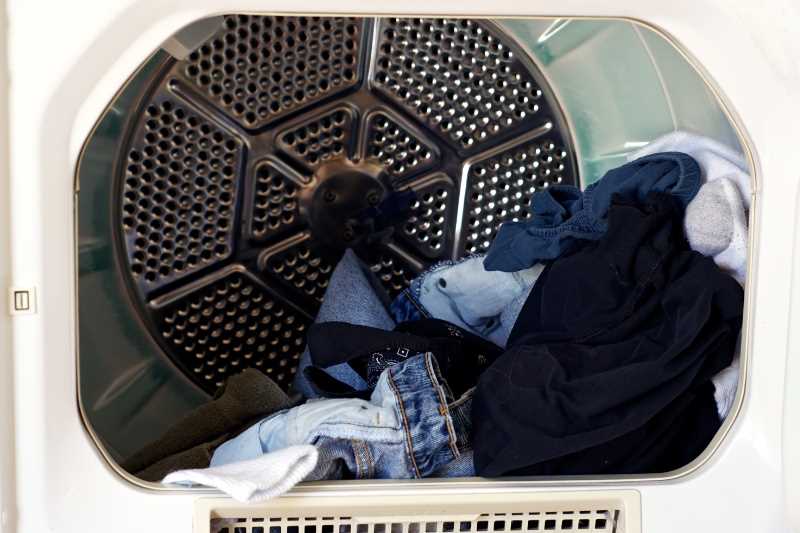
1. Fading of Color
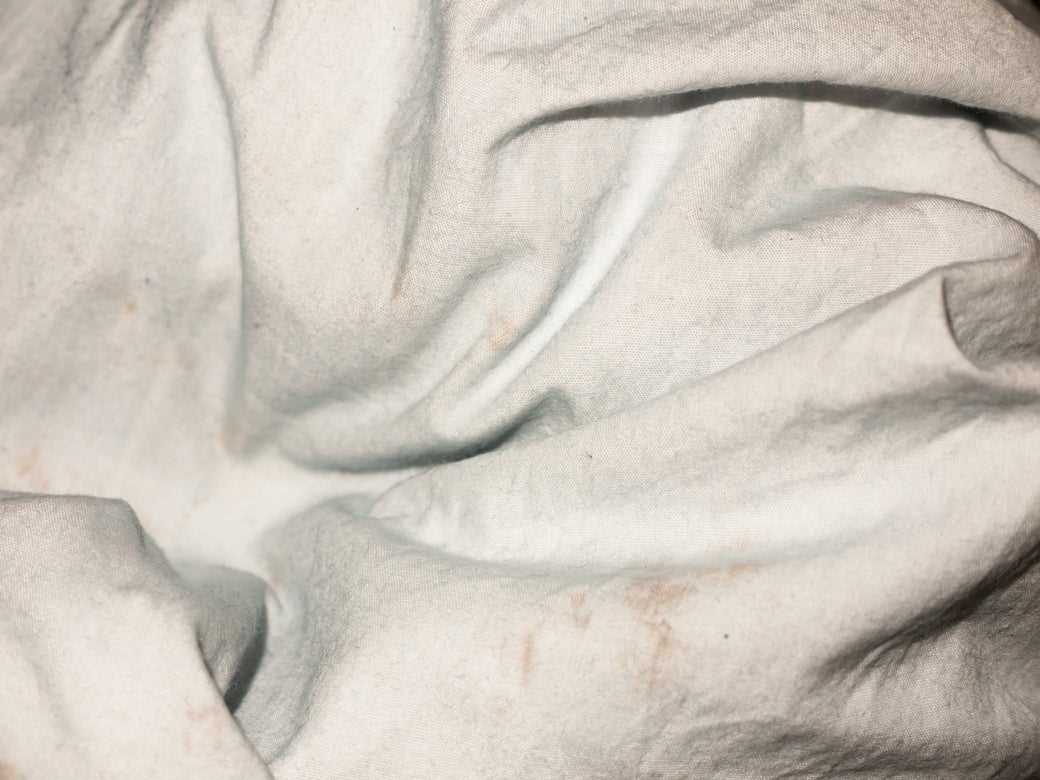
One of the main problems when washing white clothes with dark clothes is the potential for color transfer. Dark colors, especially those that are deep or vibrant, have a higher chance of bleeding their dyes during the wash cycle. As a result, the white fabric may become faded and lose its original brightness.
2. Staining
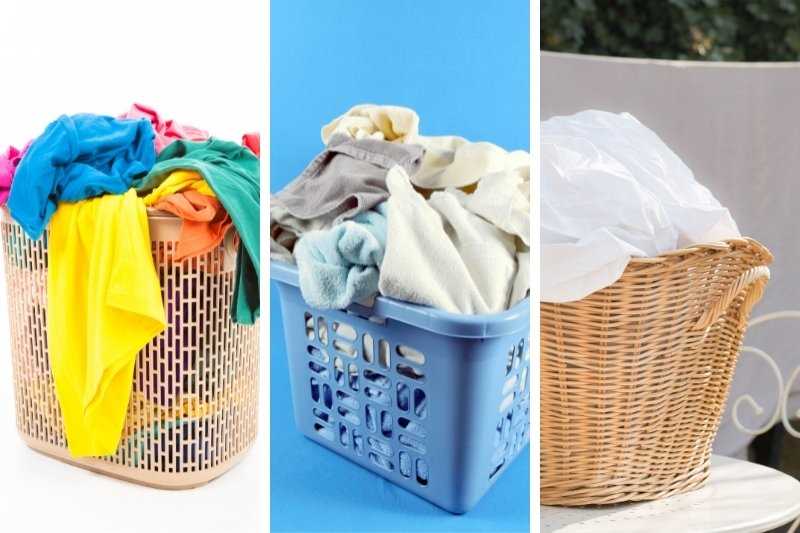
In addition to fading, washing white clothes with dark clothes can lead to staining. The dyes from the dark clothes can transfer onto the white fabric, resulting in visible stains. These stains may be difficult to remove, especially if the dyes have penetrated deep into the fabric fibers.
3. Discoloration

White fabric can also become discolored when washed with dark clothes. The dyes from the dark clothes can mix with the detergent and create a colored residue, which can then be deposited onto the white fabric. This discoloration can give the white fabric an overall dingy or yellowed appearance.
4. Wear and Tear
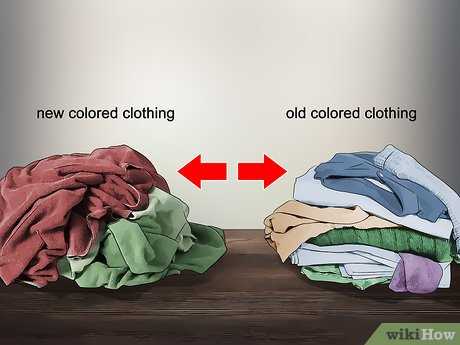
Washing white clothes with dark clothes can also cause wear and tear on the fabric. If the dark clothes have rough textures or decorative elements such as zippers or buttons, they can rub against the white fabric during the wash cycle. This friction can lead to pilling, fraying, or even small tears in the white fabric.
5. Permanent Damage

In some cases, the damage caused by washing white clothes with dark clothes may be irreversible. Stains, discoloration, and fading can become permanent, making it difficult or even impossible to restore the original appearance of the white fabric. The longevity and quality of the white clothes can be significantly affected.
Therefore, it is advisable to separate white clothes from dark clothes when doing laundry to minimize the risk of damage to the white fabric. By washing them separately, you can ensure that the white clothes maintain their brightness, cleanliness, and overall quality.
Tips for Keeping White Clothes White
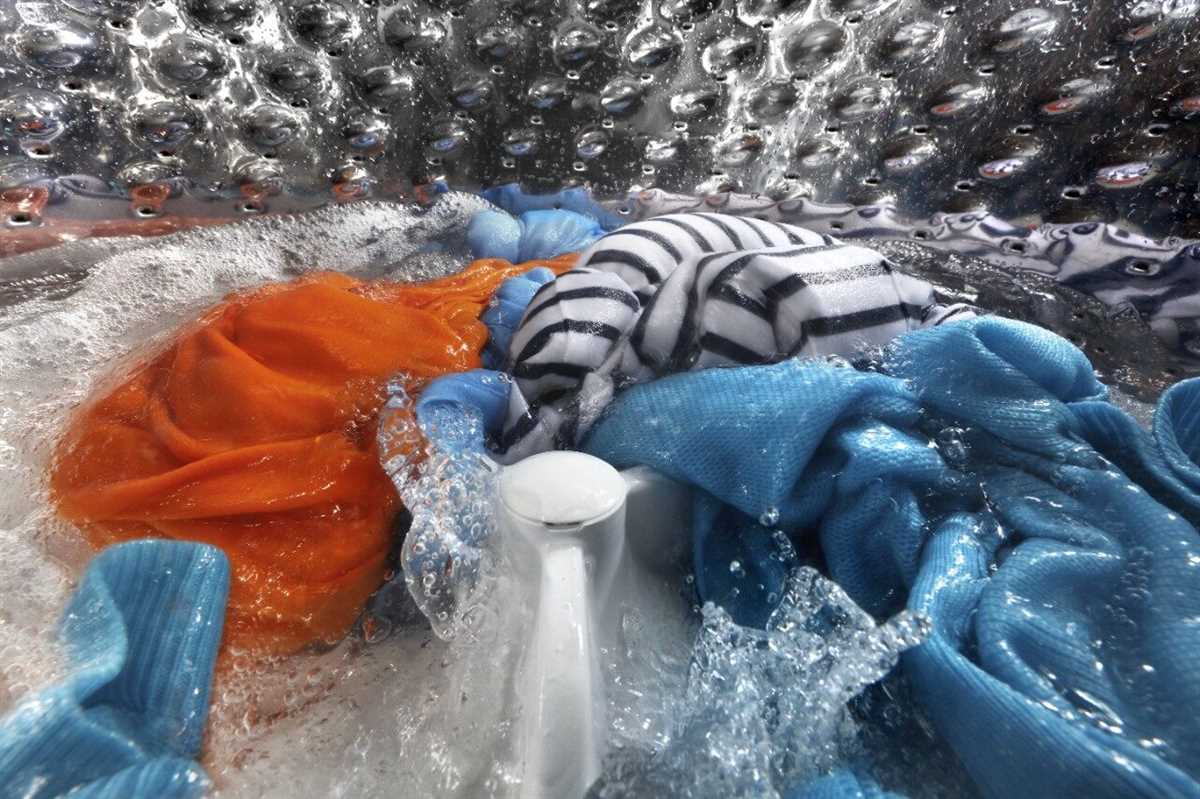
Keeping your white clothes bright and stain-free can be a challenge, especially when washing them with dark clothes. Here are some tips to help you maintain the whiteness of your garments:
- Separate your laundry: It is important to separate your white clothes from your dark clothes before doing the laundry. Washing them together can lead to color bleeding and transfer, resulting in dull, grayish white clothes.
- Pre-treat stains: Before washing your white clothes, make sure to pre-treat any stains. Apply a stain remover directly to the stain and let it sit for a few minutes before washing. This will help remove tough stains and keep your whites looking their best.
- Use the right temperature: When washing white clothes, it is best to use warm water. This helps to break down dirt and remove stains effectively. However, always check the care label of your garments for specific washing instructions.
- Choose the right detergent: Opt for a detergent that is specially formulated for white clothes. These detergents often contain brightening agents that help keep white clothes looking vibrant. Avoid using bleach unless necessary, as it can weaken the fibers and yellow the fabric over time.
- Avoid overloading the machine: Overstuffing the washing machine can prevent clothes from getting properly clean. It is better to wash smaller loads to ensure that each garment gets sufficient agitation and rinsing.
- Avoid direct sunlight: After washing, avoid drying your white clothes in direct sunlight. Sunlight can cause yellowing and fading of white fabric. Instead, opt for air drying in a shaded area or using a dryer on a low-heat setting.
- Consider using whitening boosters: Using whitening boosters, such as baking soda or white vinegar, can help brighten and maintain the whiteness of your clothes. Add half a cup of either baking soda or white vinegar to the wash cycle along with your regular detergent to see the difference.
- Read the care labels: Finally, always read and follow the care labels of your white clothes. The labels provide specific instructions regarding the optimum washing temperature, drying methods, and any other special care requirements that can help preserve the whiteness of the garments.
By following these simple tips, you can keep your white clothes looking bright and fresh, even when washing them with dark clothes.
FAQ
What happens if I wash white clothes with dark clothes?
Washing white clothes with dark clothes can result in the transfer of color from the dark clothes to the white clothes. This can cause the white clothes to appear dull, faded, or even stained.
Will washing white clothes with dark clothes ruin them?
Washing white clothes with dark clothes won’t necessarily ruin them, but it can cause them to lose their brightness and pristine appearance. The white clothes may end up looking dingy or discolored.
How can I prevent color transfer when washing white and dark clothes together?
To prevent color transfer, it’s best to separate your white and dark clothes before washing. Sort them into separate loads and wash them separately. You can also use color-catching sheets or laundry detergents designed to prevent color bleeding.
Can I use bleach to remove color transfer on white clothes?
While bleach can be effective in removing stains on white clothes, it may not always be able to remove color transfer caused by washing white clothes with dark clothes. In some cases, bleach may even make the color transfer more noticeable. It’s best to try other stain-removal methods or consult a professional cleaner.
Is there a way to restore the brightness of white clothes that have been washed with dark clothes?
There are a few methods you can try to restore the brightness of white clothes. You can soak them in a mixture of water and vinegar, or use a laundry detergent specifically designed to brighten whites. Additionally, hanging white clothes in direct sunlight can help to naturally bleach any remaining stains or discoloration.
What happens if I wash white clothes with dark clothes?
When you wash white clothes with dark clothes, there is a risk of color transfer. The darker colors can bleed onto the white clothes, resulting in stains or discoloration. It is always recommended to separate white clothes from dark clothes to prevent any unwanted color transfer.
How can I prevent colors from bleeding in the wash?
To prevent colors from bleeding in the wash, it is important to separate white clothes from dark clothes. Sort your laundry by color and wash them in separate loads. You can also use color-catching sheets or laundry detergents specifically designed to prevent color transfer. Additionally, washing your clothes in cold water can help minimize color bleeding.











